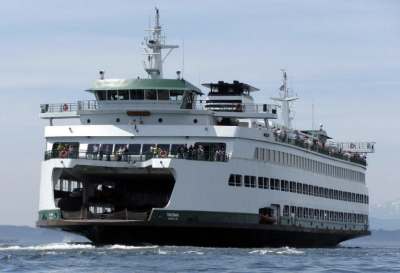A new, fast coastal research vessel will join the fleet of ships managed by Scripps Institution of Oceanography at the University of California San Diego.
The new vessel was made possible thanks to a philanthropic initiative that raised more than $1.2 million in honor of the late Dr. J. Robert Beyster, founder of Science Applications International Corp. (SAIC), and his widow Betty.
The 42'x16'x5' aluminum planing catamaran research vessel Bob and Betty Beyster will enable scientists at Scripps and others in the teaching community to conduct local research, technology development and ocean-based education. The vessel is expected to be available for use in San Diego this spring.
Scientists and students at Scripps have long benefited from a fleet of research vessels to conduct oceanographic research at sea. There has been a need, however, for a vessel with a nearshore range, low daily cost, and adaptability to support advanced research with local and global impact.
The new workboat, designed and built at Armstrong Marine USA, Port Angeles, Wash., has a draft of 2', a range of 800 kilometers (500 nautical miles), a cruising speed of over 25 knots and a top speed of 37 knots. There's capacity for six scientists and a boat operator. The vessel, which will be owned by Scripps, sports an A-frame for lifting up to 4,000 lbs., an adaptable deck foundation for configuring and securing technology, and a computer-controlled engine system to automatically maintain position and heading, which will be useful for the range of research and technology development anticipated onboard.
“The Beyster family has a long tradition of investing in students and providing opportunities for hands-on access to science,” Margaret Leinen, vice chancellor of marine sciences at UC San Diego and director of Scripps Oceanography, said in a recent statement. “UC San Diego is incredibly thankful for this commitment, and we extend our gratitude to this group of donors that joined together to support this new vessel in honor of Bob and Betty.”
The boat has a rear cargo deck measuring 19'3"x13'1" with recessed all thread tie down points. Capacities will include 600 gals. of fuel and 55 gals. water.
Main propulsion for the research vessel comes from twin Volvo Penta D11 engines, producing 510 hp at 2,250 rpm each. The mains connect to forward facing duo props through Volvo IPS transmissions with 1.70:1 reduction ratios. Volvo also handled the manufacturing of the controls and steering system of the Bob and Betty Beyster. Ship’s service power is the responsibility of a 9-kW Northern Lights 3-phase generator.
The scientific equipment provided by Scripps scientists includes a seafloor mapping system contributed by geosciences professor Neal Driscoll; a Morgan 200 hydraulic knuckle boom crane acquired by oceanographers Eric Terrill and Luc Lenain that will enable the vessel to deploy and recover autonomous vehicles; a mini remotely operated vehicle contributed by the directors of the Scripps Center for Marine Archaeology; and a hull-mounted transducer for underwater communications, supported by marine mammal acoustics researchers John Hildebrand and Simone Baumann-Pickering. The boat is also be fitted with a Kinematics hydraulic winch and the Pullmaster PL5 A-frame mounted hydraulic winch.
“Scripps operates a world-class fleet of oceangoing research vessels. This fleet is now made even more capable with the addition of Bob and Betty Beyster, which fills an important niche for research and teaching opportunities close to shore on a fast, nimble platform equipped with instruments and over-the-side handling equipment appropriate for heavy coastal scientific applications,” said Scripps associate director Bruce Appelgate, who oversees ship operations. “This vessel enables tremendous opportunities, whether conducting experiments in the La Jolla Canyon just offshore, or expeditions throughout the Channel Islands.”





